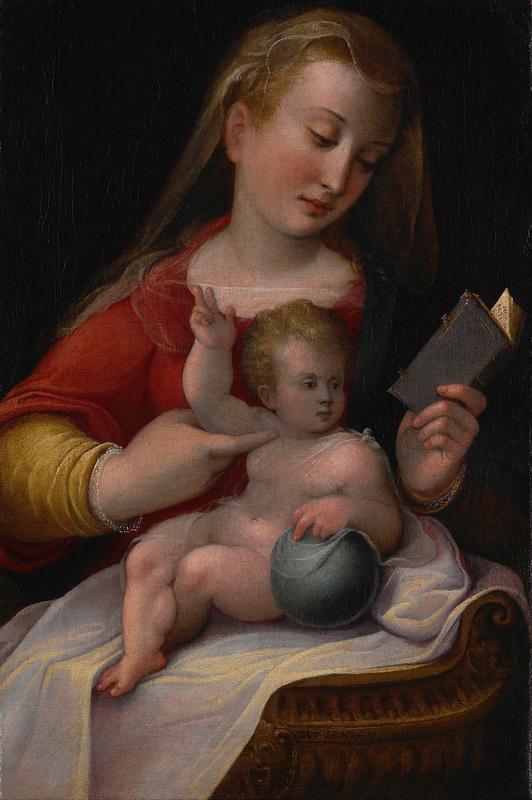More about Madonna and Child

Sr. Contributor
Barbara Longhi was a woman way ahead of her time.
Thanks to her sympathetic artist father, Luca Longhi, she was one of a handful of Renaissance women who had even a remote chance of becoming an artist. For the majority of women, it was just not a possibility. Thankfully, Longhi’s father trained her to both paint and take a business-like approach to managing her artistic production. Before long, Longhi was hustling and making it as an artist in Ravenna, Italy.
Longhi painted this piece around 1580 to 1585, placing it just about a decade after she finished her studies with her father. As Longhi began to churn out paintings featuring Madonna and child, she was carving her own niche in the art world. As Mary Cassatt would also learn three centuries later, Barbara found that because feminine themes were “appropriate” for her to create, patrons were more willing to purchase her paintings with those kinds of subjects. Like any smart business woman, Longhi followed where her commissions led.
Longhi eventually became synonymous with these vibrant and sensitive depictions of the Madonna and child. Twelve of her fifteen known works highlight this maternal scene. Besides the positive public response to these themes, being a woman may have allowed Longhi to connect with this subject matter in a way that her male contemporaries could not. What I like most are the baby's pudgy legs. Show me a male artist who could have crafted those little legs so lovingly.
Before long, Longhi started to gain some notoriety. Even Giorgio Vasari, historian and biographer of the Renaissance artists, had to admit that she was a talented artist in her own right. With seven of her overall paintings residing in her home town of Ravenna, it is surprising that two of her signature Madonna and child compositions are in the United States. In addition to this one at the Indianapolis Museum of Art, there’s another one at the Walters Art Museum in Baltimore.
Leave it to a woman to know how valuable art made by women could be. While the rest of the world was pretending that great women artists simply did not exist, American women were building collections that included historical women artists, as well as commissioning their contemporary counterparts. A woman named Catherine Eddy Beveridge gifted this work to the Indianapolis Museum of Art. She was a wealthy debutante from Chicago who ran in the same social circles as Teddy Roosevelt, visited the court of Czar Nicholas II in Russia, and had a great eye for art. Before donating this work to the museum so other people could enjoy it, Beveridge inherited the painting from her equally rich and fabulous aunt, Delia Caton Field. A portrait of Beveridge by Cecilia Beaux is also in the museum’s collection. Beveridge extended her philanthropic giving to the museums of her hometown of Washington, D.C., donating artworks to the National Gallery of Art, including a pastel sketch by Edgar Degas of Madame Dietz-Monnin, a female subject who stars in quite a number of his works.
Sources
- National Gallery of Art. “Madame Dietz-Monnin.” Collection. https://www.nga.gov/collection/art-object-page.39742.html. Accessed 21 March 2021.
- The Newberry. “Inventory of the Catherine Eddy Beveridge Paper.” https://mms.newberry.org/xml/xml_files/Beveridge.xml. Accessed 21 March 2021.
- The Walters Art Museum. “Madonna Adoring the Child.” Collection. https://art.thewalters.org/detail/11457/madonna-adoring-the-child/. Accessed 19 March 2020.
- Washington Life Magazine. “Privilege and Politics.” February 2006. https://www.washingtonlife.com/issues/february_2006/society_privilege_a…. Accessed 21 March 2020.











